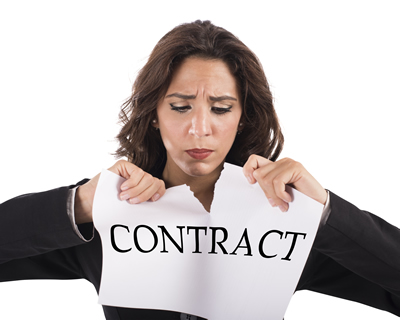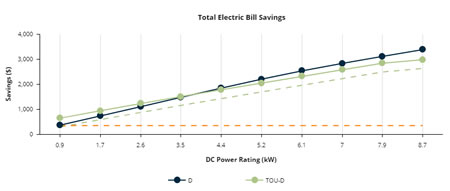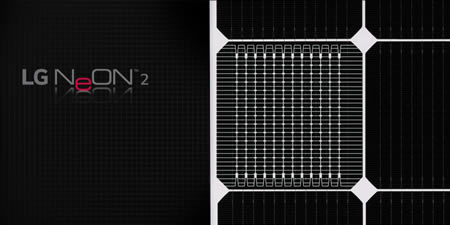Welcome to the
Run on Sun Monthly Newsletter

In this Issue: |
June, 2018
Volume: 9 Issue: 3
Dropping the Ball - CPUC & CSLB Punt Disclosure Document DeadlineCalifornia law requires that the California Public Utilities Commission (CPUC) and the Contractors State License Board (CSLB) publish a new, "Solar Energy System Disclosure Document" for solar contractors to provide to clients as of July 1, 2018.
Interestingly, those are the only requirements called out in the CSLB email. Unstated, but a part of the bill, is the discretion granted to the CSLB under the law to add any additional requirements that it deems "appropriate or useful in furthering the directive described" in the law. Apparently CSLB doesn't see a need to go any farther. The CSLB has a draft document on its website, and if that is all that is mandated, this whole exercise will have fallen woefully short. (You can find CSLB's draft here.) In a nutshell, all that one-page document discloses is the total system cost, how to contact the CSLB if you have a complaint, and your "three-day right to cancel." Not surprisingly we have always provided all of this information in our contracts, and it is pretty shocking that some contractors have to have a mandated disclosure of how much the bloody thing costs! So what should be here that isn't? How about:
And while we are at it, where are the disclosure requirements for solar proposals? Such as:
We have a long way to go before homeowners can be assured that they are being treated fairly by solar contractors. This delayed SESDD is but a tiny step in the right direction. |
“The CSLB has a draft document on its website, and if that is all that is mandated, this whole exercise will have fallen woefully short…”
Get your copy of
Commercial Solar:
Step-by-Step
from
Run on Sun
Founder & CEO
Jim Jenal

Now available on Amazon.com
in both Print & Kindle versions.
Commercial Solar:
Step-by-Step
from Run on Sun
Founder & CEO
Jim Jenal

Now available on Amazon.com
in both Print & Kindle versions.
Help Us Spread the News!


My Electric Bill is So High! Will Solar Help? Part 1: How High is High?EDITOR'S NOTE: Now that summer is here, we thought we would reprise our series, My Electric Bill is So High! Will Solar Help? If you are considering going solar, this series should be just what you are looking for! We hear it all the time: "My electric bill is so high, I just want to stick it to [insert name of utility here]! Can solar help?" Now we are in the business of selling and installing solar, so our preferred answer is, "Of Course!" But that is not always the answer we end up giving. So Part 1 of this three-part series focuses on that electric bill to answer a few questions first: 1) How high is it? 2) What can you do to make it lower - pre-solar? And 3) Is your home even a good candidate for going solar? Let's look at each in turn... How High is High?Ask most any consumer how high their electric bill is and they will all pretty much tell you -- too high! So let's recognize a few things at the start: if you are a PWP or DWP customer, your electric bills will be lower than your compatriots sufferi, er, living, in SCE territory. SCE bills monthly, whereas PWP and DWP bill (roughly) every two months. Most non-solar, residential customers are on a tiered rate structure - that is, the more you use, the more you pay for what you are using. That said, not all tiered rates are alike: SCE has a true, three-tier rate structure where the cost increases in each subsequent tier, whereas PWP has a bizarre structure where the "highest" tier is actually cheaper than the middle tier! (I wonder how many PWP customers realize that perverse incentive?) Taken together, what can you say about how high is high? We would break it down roughly this way:
To illustrate how and why that works, let's look at the modeling that goes into sizing your system. (For this analysis we made use of Energy Toolbase, one of the most sophisticated tools available for modeling the performance of PV systems and producing comprehensive, authoritative and transparent solar proposals.) We created three different usage profiles corresponding to the categories set forth above. All were SCE customers under the current Domestic rate structure in region 9 (i.e., Altadena). The first had usage such that their average bill was under $100/month. The second had bills between $200 and $300/month, and the third had bill in excess of $450/month. In each case, summer usage was higher than the rest of the year. We performed similar analyses for the other two use cases to determine the optimal system size, and to then determine their savings and payback. Here are our results:
As system size increases, even without assuming any improvement in price based on economy of scale (the system price in each case is $4.00/Watt), it is clear that larger systems have significantly greater return on investment over the life of the system. If your bills fall into that third use case, you are going to benefit greatly by adding solar. But in that first use case, not so much. What can you do to make your bills lower -- before adding solar?However, even if your use case makes sense, it is important to consider some low-hanging fruit before plunking down thousands of dollars on a solar power system. The two most obvious candidates for investment are pool pumps and air conditioning systems. Pool PumpsOlder pool pumps tend to have single speed motors, which means that they draw the same amount of energy all the time. But harken back to your elementary school science classes: a body at rest tends to stay at rest; a body in motion tends to stay in motion. (Thank you, Isaac Newton!) What's that got to do with pool pumps? Well, all that water in your pool has a lot of mass and when it is just sitting there it takes a great deal of energy to get it moving - it's a big body at rest! But once you get it moving, it is relatively easy to keep it moving, so you need to expend a lot less energy to do so. Single-speed pool pump motors don't get that, and they just keep pumping as hard as they can the entire time they are on. That is wasteful, and expensive. A variable-speed pump, on the other hand, embraces the eternal wisdom of Sir Newton, and throttles down over time. That saves energy, and thus money. Even better, utilities like SCE will give you a rebate (from SCE that is $200!) toward the cost of installing a variable-speed pool pump. Updated A/CThe other big opportunity for savings is in an updated A/C system. Newer systems are significantly more efficient out-of-the-box, and as older systems age, their efficiency decreases, meaning they are costing you more to operate. Other Savings OpportunitiesYou don't really have an old refrigerator running in your garage, do you? If it is old, it is inefficient, and you've just put it in the hottest part of your home (short of the attic) so it has to work really hard to keep that case of beer cold. Either ditch it altogether, or only run it when that party is about to happen! How old is your thermostat? Does it even work, or do you just use it as an on/off switch? New, smart thermostats can save you money - and there is likely a rebate there, too! How good a candidate is your home for solar?Ok, your use case is compelling, even after harvesting all that luscious, low-hanging fruit. So is it now certain that solar will help? Um, maybe. How good of a candidate is your home for solar? We have written about this at length before, for example here and here. If you have lots of shading, your house will not be a good candidate -- you don't want to be the owner of a system installed under a tree! But other issues can change the value proposition for installing solar. For example, your electrical service might be ancient and undersized, requiring you to spend additional money to upgrade to a newer, larger service. If you are installing a relatively large PV system, that is a relatively small increase, but on our small use case, upgrading your service panel can add 10 to 15% to the total cost. Other factors that are not show-stoppers but which increase costs are second-story and/or steeply pitched roofs (both of which just make the labor costs higher because the work goes slower), roofs other than composition shingles, service panels located far from where the array needs to go (like the array on a detached garage but the service panel in on the side of the house with a concrete driveway in between). How can you know for sure? Simple, have a professional installer come out and do a proper site evaluation. So how do you find such a person? Ah, that is the subject of Part 2: How Do I Find Someone to Trust? |
LG to Assemble Solar Modules in the USLG - the exclusive solar module supplier for Run on Sun - has just announced that starting next year they will be assembling solar modules in the United States! This is big news, here's our take.
Ever since the Trump Administration imposed so-called "201 sanctions" on imported solar modules, there has been speculation that companies like LG would start assembling modules in the U.S. This week that speculation was confirmed as LG announced that they would expand their existing facility in Huntsville, Alabama to create a module assembly plant capable of producing 500 MW of modules per year, with production to begin in "early 2019." LG intends to produce their 340 Watt NeON 2 series of 60-cell modules, the successor product to our current go-to, 335 Watt module. It is not clear whether LG will produce modules with both white and black backsheets, or whether they will begin to manufacture the even higher efficiency, "rear-contact" modules in the U.S. Given that LG is appealing the tariffs on the rear-contact modules (as they are on the AC module that they make with Enphase) on the grounds that those products do not compete against the cheaper Suniva and SolarWorld modules that are the basis for the (entirely bogus) tariff case (see, Suniva -- the Tail Wagging the Dog), it seems that any decision to include their production here would turn on the outcome of that appeal. It remains to be seen how much cheaper this will make LG modules, but this appears to be a good development both for about 160 workers in Huntsville, and U.S. consumers. The tariffs, meanwhile, remain an ignorant policy decision, causing substantial harm throughout the solar industry. |




